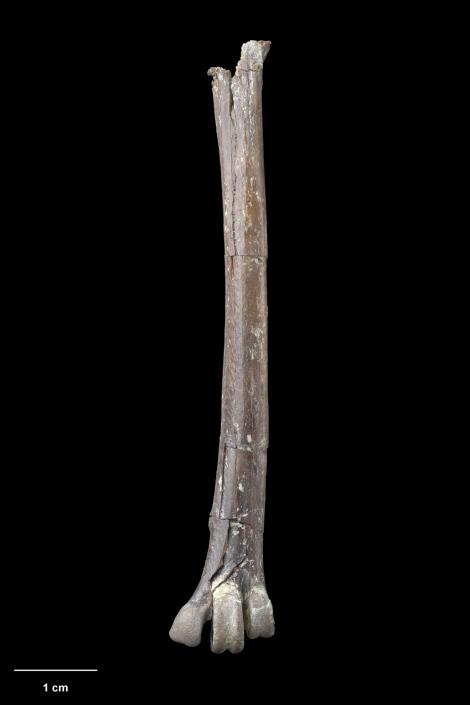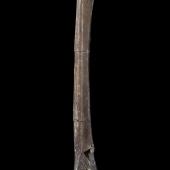St Bathans heron
Matuku otagoense Scofield, Worthy & Tennyson, 2010
Order: Pelecaniformes
Family: Ardeidae
Other names: Saint Bathans heron
The St Bathans heron was described from seven bones recovered from 19-16 million-year-old (Early Miocene) lake-bed deposits along the true left bank of the Manuherikia River, St Bathans, central Otago. The partial bones recovered were 2 tarsometatarsi, the cranial end of a coracoid, 2 quadrates, an axis vertebra, and the tip of a mandible.
The St Bathans heron was slightly smaller than a white-faced heron, but was not closely related to any of the three main groups of herons (day heron/egrets, night herons, and bitterns). The genus name is based on the Māori word for heron, and otagoense is derived from the Otago province where the bones were found.
The holotype (NMNZ S.50003) is a nearly intact (repaired) tarsometatarsus. All the bones are held at Museum of New Zealand Te Papa Tongarewa.
Weblink
References
Scofield, R.P.; Worthy, T.H.; Tennyson, A.J.D. 2010. A heron (Aves: Ardeidae) from the Early Miocene St Bathans fauna of southern New Zealand. Records of the Australian Museum 62: 89-104.
Recommended citation
Miskelly, C.M. 2013 [updated 2022. St Bathans heron. In Miskelly, C.M. (ed.) New Zealand Birds Online. www.nzbirdsonline.org.nz
St Bathans heron
- Breeding season
-
- Jul
- Aug
- Sep
- Oct
- Nov
- Dec
- Jan
- Feb
- Mar
- Apr
- May
- Jun
- Egg laying dates
-
- Jul
- Aug
- Sep
- Oct
- Nov
- Dec
- Jan
- Feb
- Mar
- Apr
- May
- Jun







